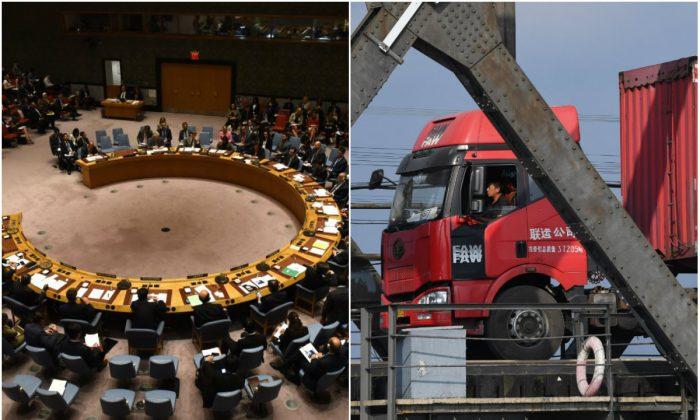The United Nations Security Council has added 32 items to the list of goods prohibited from being sold to North Korea in order to dampen its ambitions to build weapons of mass destruction.
The banned items—materials, equipment, goods, and technology—are considered “dual-use,” meaning they could be used both for benign purposes as well as for development of weapons.
Some items are self-explanatory, like radiation detectors or TV cameras shielded from radiation.
Some are more generic, like certain common types of stainless steel piping, higher-concentration nitric acid, or more powerful cooling systems.
Many are specialized products, like mass spectrometers, particle accelerators, seismic detectors, and flash X-ray machines.
The resolution has already imposed a host of restrictions, including a ban on sale of liquid natural gas to North Korea, limits on oil sales, a ban on North Korean textile exports, and a ban on new work permits for its citizens.
The resolution is not legally binding, but, to a degree, it expresses what the member countries are able to agree on.
President Donald Trump has been increasing pressure on North Korea to abandon its nuclear and missile programs. He’s also urged other nations to exert pressure on the rogue regime.
His efforts have already borne some fruit. In August, China announced it was halting imports of coal, iron, and lead from North Korea. In September, after North Korea conducted a sixth underground nuclear test, the Chinese regime voted in favor of the new sanctions, just as Russia did.
Meanwhile, a second U.S. aircraft carrier has entered the Korean Peninsula region—a rare sight. Trump has repeatedly said military action is on the table if diplomatic efforts fail.
- Ring magnets (except those designed for consumer electronics or automobile applications)
- Hot cells
- Glove boxes suitable for use with radioactive materials
- Software for neutronic calculations/modeling
- Software for radiation transport calculations/modeling
- Software for hydrodynamic calculations/modeling (except those used strictly for civilian purposes, such as but not limited to communal heating utilities)
- Radiation detection, monitoring and measurement equipment
- Radiographic detection equipment such as X-ray converters, and storage phosphor image plates (except X-ray equipment specially designed for medical use)
- Electrolytic cells for fluorine production
- Particle accelerators
- Freon and chilled-water cooling systems capable of continuous cooling capacity of 100,000 Btu/hr (29.3 kW) or greater
- Hardened steel and tungsten carbide precision ball bearings (3-mm diameter or greater)
- Tributyl phosphate
- Nitric acid in concentrations of 20 percent of weight or greater
- Fluorine (except that used for strictly civilian purposes, such as refrigerants, including freon and fluoride for toothpaste production)
- Alpha-emitting radionuclides
- Bellows-sealed valves
- Isostatic presses
- Bellows manufacturing equipment, including hydraulic forming equipment and bellows forming dies
- Metal inert gas welders (greater than 180 A DC)
- Monel equipment, including valves, piping, tanks and vessels (pipes and valves greater than 8-in diameter and rated for 500 psi and tanks greater than 500 l)
- Grade 304, 316 and austenitic stainless steel plates, valves, piping, tanks and vessels (pipes and valves greater than 8-in diameter and rated for 500 psi and tanks greater than 500 l)
- Electroplating equipment designed for coating parts with nickel or aluminum
- Vacuum valves, piping, flanges, gaskets and related equipment specially designed for use in high-vacuum service (0.1 Pa or lower pressure)
- Centrifugal multiplane balancing machines
- Frequency changers capable of operating in the frequency range of 300-600 Hz
- Mass spectrometers
- All flash X-ray machines and “parts” or “components” of pulsed power systems designed therefrom, including Marx generators, high-power pulse-shaping networks, high-voltage capacitors and triggers
- Electronic equipment of synthesized frequencies within the range of 31.8 GHz or greater and power output of 100 mW or greater for time-delay generation or time-interval measurement, as follows: (a) digital time delay generators with a resolution of 50 nanoseconds or less over time intervals of 1 microsecond or greater; or (b) multichannel (i.e., with 3 or more channels) or modular time interval meters and chronometry equipment with resolution of 50 nanoseconds or less over time intervals of 1 microsecond or greater
- Chromatography and spectrometry analytical instruments
- Seismic detection equipment or seismic intrusion-detection systems that detect, classify and determine the bearing of the source of a detected signal
- Radiation-hardened television cameras






Friends Read Free